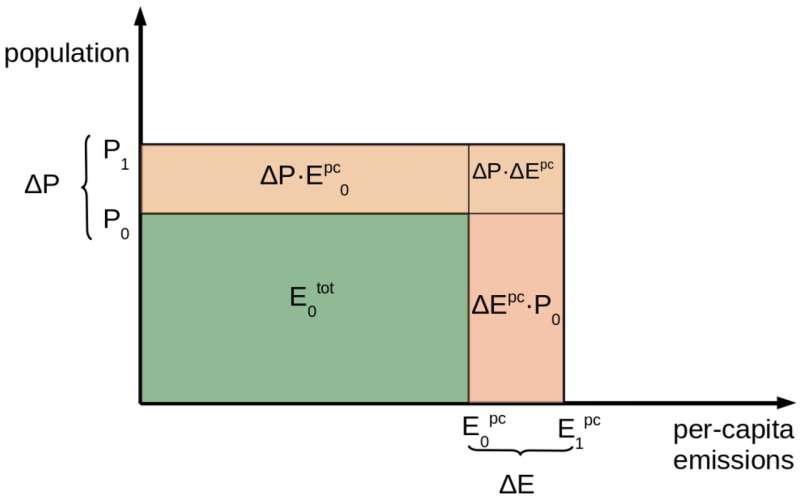This article has been reviewed according to Science X's editorial process and policies. Editors have highlighted the following attributes while ensuring the content's credibility:
fact-checked
trusted source
proofread
Population growth is the main driver of increased carbon emissions, study finds

The richest countries emit more carbon dioxide than the rest of the world combined, while population is only growing in the poorest countries. These are two widespread notions that argue for focusing on reducing emissions per capita in order to mitigate climate change. But this is not entirely true on the light of data from the last 30 years, new research published in the journal Sustainability shows.
A dominant narrative in the climate change debate is that addressing population is not relevant for mitigation. This is because the population is only growing in the poorest countries, whose contribution to global carbon emissions is negligible, the reasoning goes. The largest emissions come instead from rich countries where the population no longer grows.
"This way of reasoning is not correct. Our thorough analysis suggests that climate change mitigation strategies should address population along with per capita consumption and technological innovation. A comprehensive approach to the problem is needed," says Giangiacomo Bravo, professor at Linnaeus University.
The World Bank's four income groups
The World Bank has four classifications of income for the world's countries: low, lower-middle, upper-middle and high income. These are based on the respective country's gross national income (GNI) per capita.
The current figures apply to the year 2021, when 28 countries are defined as low-income countries, 54 as lower-middle, 54 as upper-middle and 81 as high-income countries.
Analysis of 30 years of emission data
The basis for Giangiacomo Bravo's statement is the analysis of 30 years of emission data for all the world's countries that he and two research colleagues have carried out. By splitting the countries into four income groups according to the World Bank's standard classification, the researchers were able to confirm that the contribution of low-income countries to emission increase is indeed limited. However, they also found that:
- Population is growing in all four income groups.
- The largest contribution to global carbon emissions comes from the upper-middle group.
- Population growth is the main driver of increased emissions in all income groups except the upper-middle one.
- The successful reduction in per capita emissions that occurred in high-income countries was nullified by the parallel increase in population in the same group.
"Our analysis does not support the widespread belief that increased affluence is the main driver of increased carbon emissions at the global level. It is definitely an important factor, but neglecting population growth leads to a skewed and misleading vision of reality."
"Developed nations with stable or declining populations should hence quit fighting these trends and instead embrace them. Just as a small population growth in rich countries can drive big emission increases, a population decrease in rich countries could have big emission-related benefits going forward," says Giangiacomo Bravo.
More information: Lucia Tamburino et al, An Analysis of Three Decades of Increasing Carbon Emissions: The Weight of the P Factor, Sustainability (2023). DOI: 10.3390/su15043245
Provided by Swedish Research Council



















